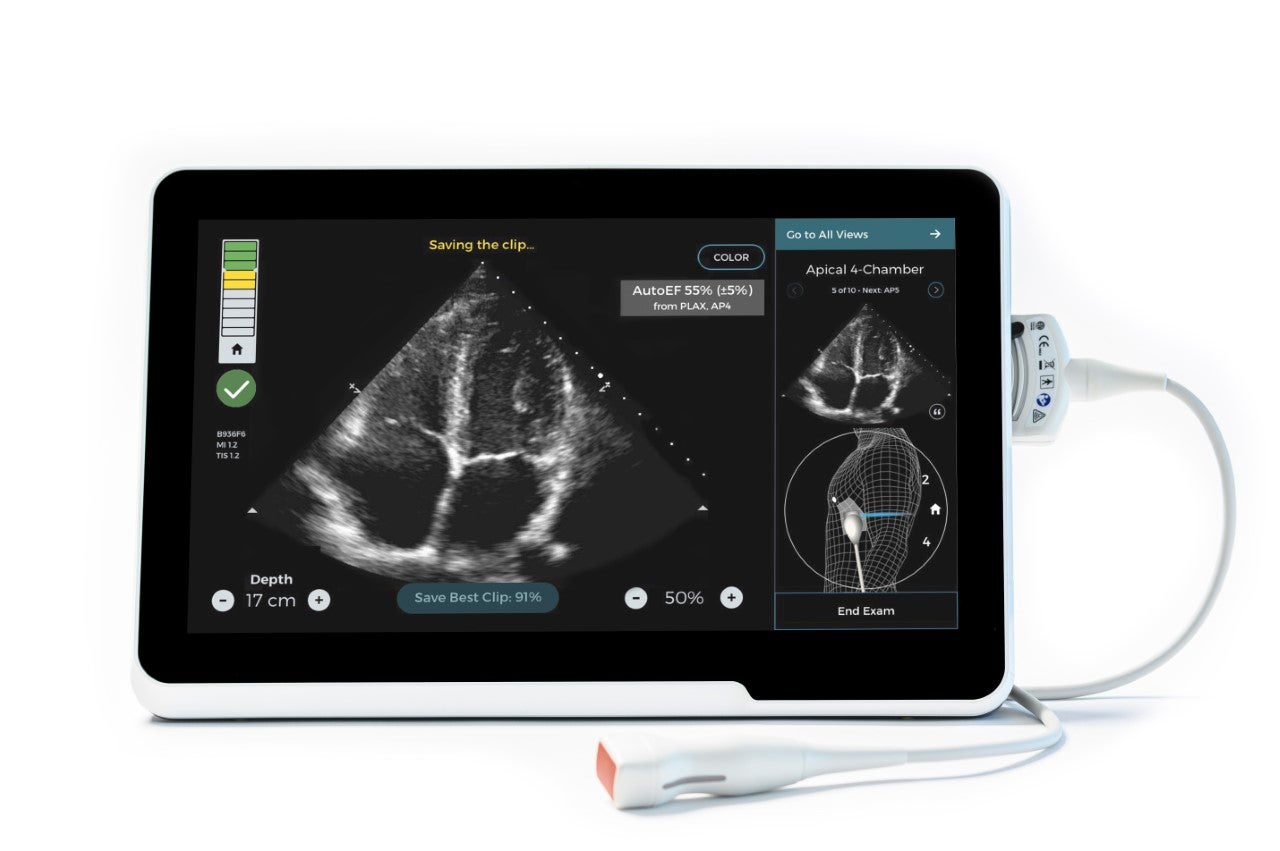
First used in the 1950s, ultrasounds rely on high-frequency sound waves to provide cross-sectional images of the body. Over the past 60+ years, ultrasound has become an essential technology for timely diagnosis, particularly because it is cheaper and more accurate than many other imaging methods.
After selling artificial intelligence (AI)-based image recognition start-up IQ Engines to Yahoo in 2013, Kilian Koepsell and Charles Cadieu decided to apply the same technology to other fields where it could have a positive impact. They concluded the right use case was tackling a bottleneck in medical imaging and ultrasound particularly: the need for highly trained professionals.

Discover B2B Marketing That Performs
Combine business intelligence and editorial excellence to reach engaged professionals across 36 leading media platforms.
To solve this issue, Koepsell and Cadieu co-founded Caption Health around the principle there is a need to apply technology to “emulate the expertise of highly trained medical experts and put that ability into the hands of every care provider”.
The Bill & Melinda Gates Foundation spotted the work that Caption was doing to develop AI ultrasound software – known as Caption AI – for the heart. This led the foundation to award Caption a grant of $4.95m in November to develop similar AI technology for lung ultrasounds with the aim of improving timely and accurate diagnosis of pneumonia, a leading killer of young children and a huge health threat in the developing world.
Spotlight on Caption AI
Caption AI guides any healthcare professional through performing and then interpreting an ultrasound of the heart. Unlike other AI technologies that simply support assessment and interpretation of images for diagnosis, Caption noticed that the challenge is actually having the training to produce a good quality image in the first place.
Caption AI both guides the user to produce the image, as well as assessing the image to support diagnosis, explains Koepsell, who serves as Caption’s CTO.

US Tariffs are shifting - will you react or anticipate?
Don’t let policy changes catch you off guard. Stay proactive with real-time data and expert analysis.
By GlobalDataThe AI software has been developed for the heart because physicians identified this as the hardest organ to medically image. Further to this, heart conditions are highly prevalent and one of the leading causes of death globally.
Koepsell explains: “The more we looked, the more we learned that – specifically for the heart – it is very hard to get a good view. It takes a lot of training to understand what is going on and how to adjust the probe.”
To guide the healthcare professional, Caption have “recreated the whole user interface”, according to Koepsell. He explains: “Rather than just showing a 2D grey ultrasound cone that then has to be interpreted, we have instructions on the screen.”
The AI software gives feedback and advice on what direction to move the probe to get a better impact. Koepsell adds: “Caption AI really guides you to a point where they have the image they’re looking for. It automatically records the image and then guides them to the next image.”
In July 2020, Caption AI became the first AI cardiac ultrasound software to be approved by the US Food and Drug Administration (FDA). The approved software was then packaged into a marketable device developed by a partner. According to Koepsell, the software and the device are already available in 20 hospitals across the US.
Democratising access to lung ultrasounds
Despite being preventable and treatable, pneumonia remains the leading cause of death in children under the age of five worldwide. The lung disease tragically killed 1.3 million children in 2011 and was responsible for 18% of child deaths worldwide, according to the Gates Foundation.
In addition to its work with rolling out immunisation programmes in the developing world to protect children against pneumonia, the Gates Foundation is also focusing on improving access to other diagnostic and treatment tools.
As part of this, the global health charity was interested in what Caption was doing in democratising cardiac ultrasound and how this could be expanded to the lung. “The Gates Foundation focuses on areas where $1 can have the biggest impact”, explains Koepsell. He adds that one of the biggest challenges to tackling global health challenges is detection and so ultrasound has a huge role to play here.
Similar to the cardiac ultrasound market, the bottleneck in the lung ultrasound field is a lack of trained users with the correct level of clinical skill and technological expertise. Therefore, there is an urgent need for solutions like Caption’s to democratise access to high-quality medical images.
Yale University associate professor of emergency medicine and chief of emergency ultrasound Dr Chris Moore wrote in a release: “Expanding this AI to lung ultrasound and putting it in the hands of clinicians could have profound implications for the diagnosis and treatment of pneumonia, a leading cause of death in our youngest global citizens, as well as for Covid-19 and other lung conditions.”
The need for high quality and accessible ultrasound has only become more evident in the Covid-19 pandemic. Even though Caption and the Gates Foundation began discussing this project pre-Covid-19, Koepsell notes that there has been an increased use of bedside ultrasound due to Covid-19 and a real bottleneck in the pandemic has been a lack of staff. Therefore, the pandemic has underlined how important democratised lung ultrasound is.
Caption’s Gates Foundation $4.95m grant lasts for two years and Koepsell hopes to have the ultrasound software ready for deployment in that time period. However, the next bottleneck to widespread use of Caption’s software is the cost of the ultrasound devices themselves.
This element is outside of Caption’s remit, but Koepsell notes the company is working with hardware developers and he is optimistic that sufficiently low-cost devices will be available in the next few years.





